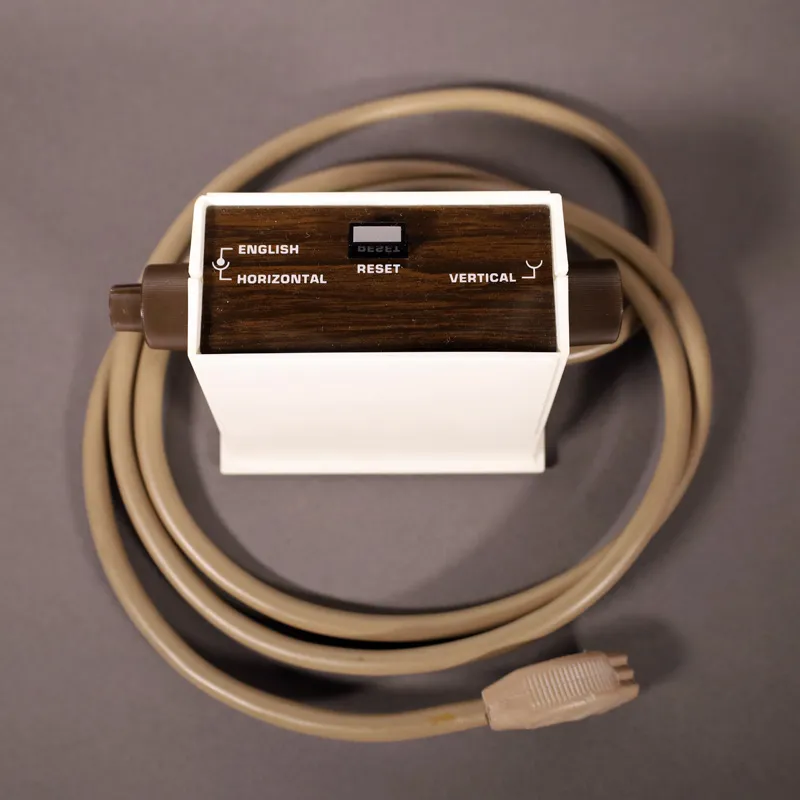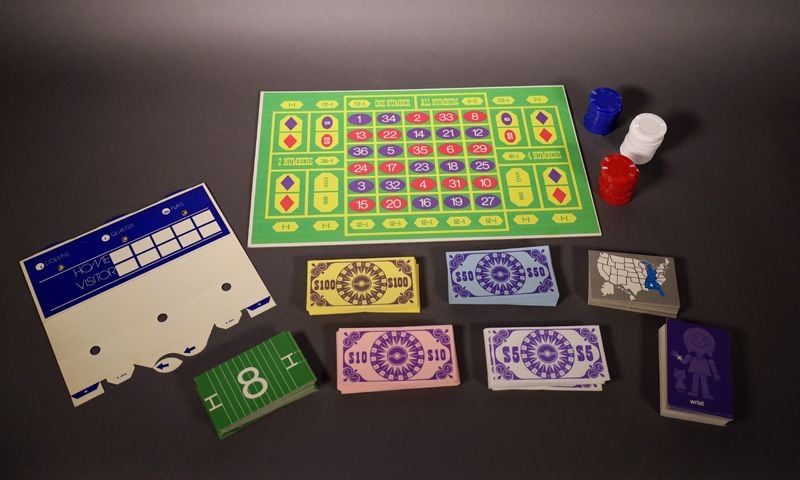NATIONAL MUSEUM OF AMERICAN HISTORY
How the Magnavox Odyssey Predicted the Future of Video Games
The first home video game system had a lot of the right ideas, just not at the right time
:focal(400x331:401x332)/https://tf-cmsv2-smithsonianmag-media.s3.amazonaws.com/filer_public/74/24/7424a998-b133-4297-8e93-d10de5cbc78f/2006010208_nmah-2006-11760_ed.jpg)
In September 1972, the Magnavox Odyssey appeared in American Magnavox stores, making it the first video game console that could be played at home with your television. Sold over a period of three years in the United States, the Odyssey has been described as a success or a failure depending on the metrics used. Financially, it broke even. A demonstration of its table tennis gameplay earlier that year provided the inspiration for Atari’s Pong, the popular arcade game and eventual home console, which was trialed shortly after the release of the Odyssey. However, the Odyssey did not capture the public imagination the way that Atari did, and the Odyssey line did not continue after its successor, the Odyssey². Rather than looking at the Odyssey in stark binary terms such as success or failure, it is useful to look at its unappreciated features and attributes—many of which found their way into future games and game consoles.
In some ways, the Odyssey was just ahead of its time.
If you were transported back to 1972 and unboxed an Odyssey, you would find a console, six carts (as they called the cartridges back then), two controllers, a large instruction manual, a set of plastic overlays for the television screen, and other supporting materials. If you were familiar with video games, you would naturally assume the carts were the games. You’d be surprised to find that when you stuck one of the carts into the console, the system turned on immediately but all you could see were some white boxes on a black screen: no text, no instructions, no background graphics. To figure out what was happening, you would need to consult the Odyssey's manual. In it, you'd learn that the console's carts weren't standalone "games" (as we now understand them) but a set of mechanics that could be used in any of the system's designed games. What this meant in practice was that nothing stopped inventive players from altering the rules laid out in the instructions or even mixing and matching the Odyssey’s components to create their own, bespoke games. In other words, the Odyssey could be seen as the forerunner of video game engines that give users the tools they need to build their own games.
Years after the Odyssey, video games began offering different tools for players to use, letting them create their own levels in the game (Lode Runner, Pinball Construction Set), swap out game artwork with their own artwork (Doom), or even make their own games without knowing code (ZZT). Now tools for professional game development are widely available, and some students learn coding by using the same tools as the professionals.

Controllers are a significant part of the video game experience. A controller needs to balance complexity with comfort and be flexible and versatile for a wide range of games. The Magnavox Odyssey’s controller had some complexity and perhaps not enough comfort. It was notably different from what Atari and arcade games would adopt: joysticks and one or a few buttons. Instead of a joystick, the Odyssey’s controller had three dials—including a small dial stacked on a larger dial—and just one button on the top of the controller. The controller was tall and wide, making it a bit bulky to hold. (This might explain the rubber stoppers on the bottom, which would have made it possible to set the controller down on a table without it slipping). The two large dials controlled your box—similar to an Etch-A-Sketch, one moved horizontal and one vertically. The smaller dial was called the English dial (a reference to the term used in billiards for side spins). It was used in some programs to control the movement of the smaller dot, which might represent a ball, puck, or even a torpedo. The depressible button was used as a reset, sending the dot back onto the television screen.
No one would confuse the Odyssey's controller with those of modern gaming systems. Even so, some aspects of the Odyssey’s design proved enduring. Using two different dials to control motion on the screen may sound cumbersome, but most contemporary controllers boast two analog sticks, the combination of which give players precise control over what is happening on the screen. And the Odyssey was hardly the last controller to be criticized for its bulk; the first-generation Xbox controller was often dinged for being too big for players’ hands. The size of the controller has generally also grown in pace with the complexity of the games, which demands more input options and more precise controls. While this most likely did not have an impact on the user’s experience, the controller might have been a bit more complicated than expected for the 1970s.

The Odyssey also came with components that were more akin to what you would find in physical board games: cards, poker chips, paper currency, and a die, among others. Some of these materials were tied to specific games, like trivia cards for a trivia game or a scoreboard, a deck of cards, and a football field for a complicated game of football. Others like poker chips, die, and money could be reused in multiple games. Purchased separately, the Odyssey also had a shooting rifle that players could aim on the screen to play gallery shooting games. The Odyssey would have been the first video game console most families would have owned, so some historians have suggested that these traditional components were included to transition families to a new digital medium.
While it’s uncertain whether the Odyssey was the first hybrid game system to mix physical and digital components for the family, other companies and creators have attempted to do the same thing in the years that followed. Many physical board games have offered digital components that either provide more immersion into the game (through media like audio recordings), randomize game events and maps, or even allow people to play together against a computer. Rifles and light guns have been used in other gaming systems, including the popular “Zapper” that Nintendo shipped in some versions of its Nintendo Entertainment System. Video games have also recently experimented with using special physical figurines that, when synced, can alter the game—adding the avatar of the figurine in the game. All of these additions have created novelty and created a form of play that blends mediums.
The Odyssey had many innovations that would eventually become part of future video game systems, but novelty and ingenuity are not the only factors that determine whether an invention will become a successful business. Even so, pathbreaking ideas can take on a life of their own, shaping trends and influencing later products. From a certain point of view, the first home video game system had a lot of the right ideas, just not at the right time.
This post was originally published on the National Museum of American History's blog on September 19, 2022. Read the original version here.
